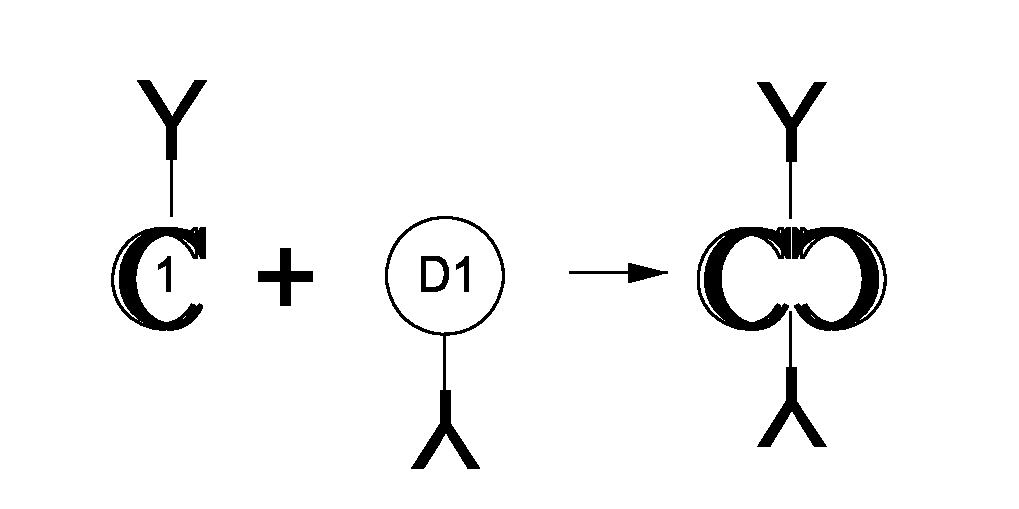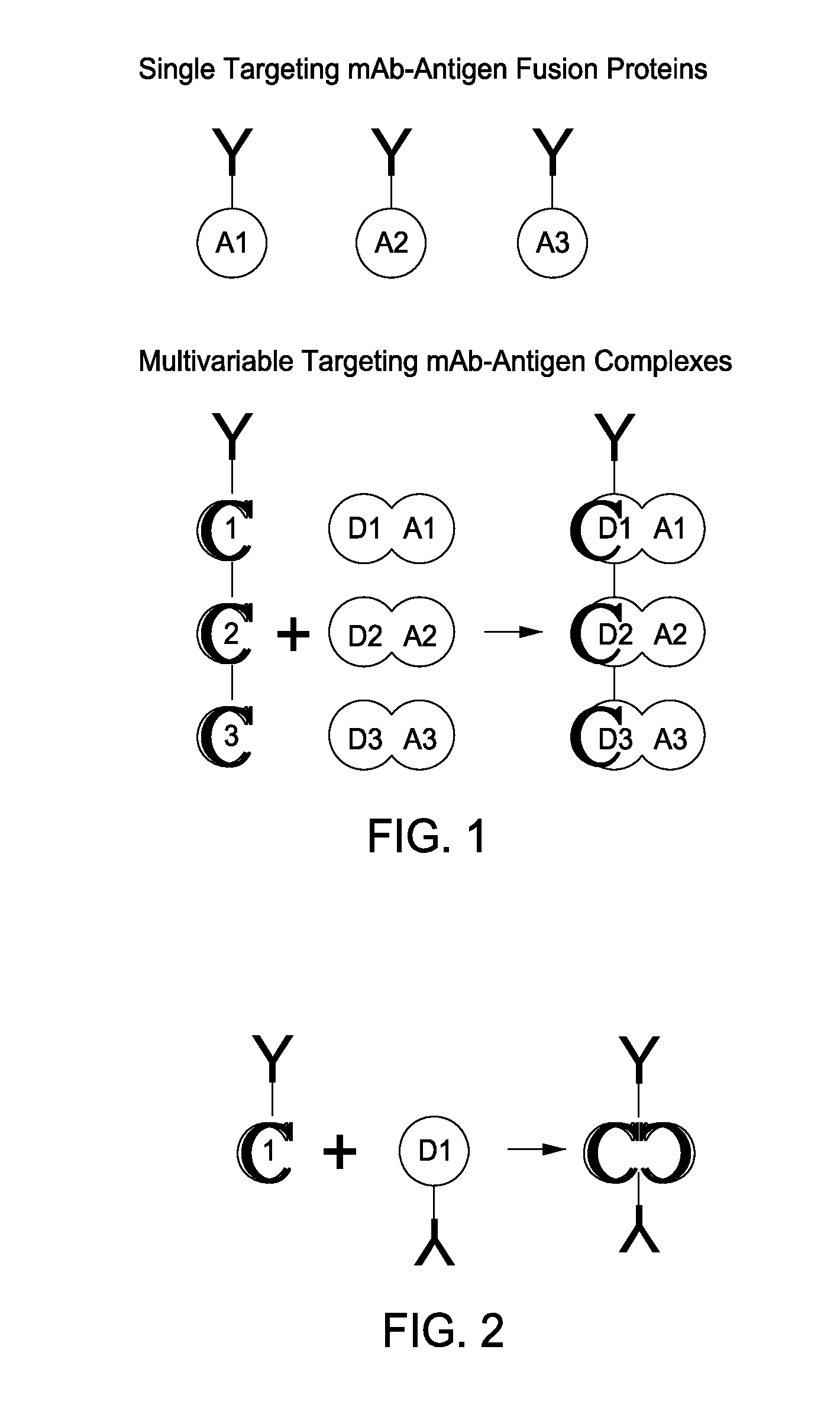Multivariable Antigens Complexed with Targeting Humanized Monoclonal Antibody
a multi-variable, humanized monoclonal antibody technology, applied in the field of vaccines, can solve the problems of mammalian production of such fusion proteins and the state of scientific knowledge that does not allow the prediction of discovery
- Summary
- Abstract
- Description
- Claims
- Application Information
AI Technical Summary
Benefits of technology
Problems solved by technology
Method used
Image
Examples
example 1
Multiple Antigens Targeted in a Complex Simultaneously with the Same Engineered Humanized MAB (MATCHMAB)
[0092]One type of therapeutic (in this case, vaccination) entity envisioned is a humanized DC-targeting mAb-antigen fusion protein, where the antibody variable region specificity is directed against an internalizing human dendritic cell receptor. The present state-of-the art is to engineer the fusion of the desired antigen to the C-terminus of the mAb H chain. This paradigm obviously allows different antigens (A1, A2, A3) to be engineered to the same proven targeting mAb backbone (Y in the figure below), thus extending the utility of the one mAb to immunizing against different pathogenic agents. This concept can be further extended by engineering, e.g., the A1, A2, A3 coding regions end-to-end fused to the IgGFc C-terminal coding region.
[0093]The present invention disclosed a new paradigm for linking the antigen to the targeting mAb that extends the concept for the first time to m...
example 2
Combination of Antibody and Cohesion / Dockerin Domains and Antigens
[0102]Example 2 shows that particular cohesin and dockerin domains can be successfully and efficiently secreted from mammalian cells as fusion proteins while maintaining the specific and high affinity cohesin-dockerin protein-protein interaction. While the extensive cohesin-dockerin literature teaches the expectation that such fusion proteins should have this functionality, it does not describe production of such fusion proteins in mammalian secretion systems. The state of scientific knowledge does not allow the prediction of the discovery since the rules (other than features such as signal peptide) for successful secretion are not fully established. Furthermore, the cohesin linker regions are known to be glycosylated in their native bacteria, and the cohesin and dockerin domains contain predicted glycosylation sites. While this may actually favor secretion from mammalian cells, it is unclear if ‘unnatural’ glyosylati...
example 3
Using Cohesin-Dockerin Technology for Immunotoxin Therapy
[0158]Currently 1.2 million Americans develop cancer each year and about 500,000 die from the disease, because most cancers cannot be cured once they have metastasized. To develop a new treatment for metastatic cancer, genetic engineering has been used to modify a powerful bacterial toxin, Pseudomonas exotoxin A (PE), so that instead of killing normal cells it selectively kills cancer cells. PE is a three domain protein composed of 613 amino acids. Anti-cancer agents are produced by deleting its binding domain (aa 1-252) and replacing it with the Fv fragment of an antibody or with a growth factor that binds to antigens present on cancer cells. These agents are termed recombinant immunotoxins (RITs). RITs have been made that target Ley present on colon, breast, lung and other epithelial cancers (B3(Fv)-PE38), that target the EGF receptor overexpressed on glioblastomas (TGF-alpha-PE38), that target mutant EGF receptors present o...
PUM
| Property | Measurement | Unit |
|---|---|---|
| time | aaaaa | aaaaa |
| pH | aaaaa | aaaaa |
| length | aaaaa | aaaaa |
Abstract
Description
Claims
Application Information
 Login to View More
Login to View More - R&D
- Intellectual Property
- Life Sciences
- Materials
- Tech Scout
- Unparalleled Data Quality
- Higher Quality Content
- 60% Fewer Hallucinations
Browse by: Latest US Patents, China's latest patents, Technical Efficacy Thesaurus, Application Domain, Technology Topic, Popular Technical Reports.
© 2025 PatSnap. All rights reserved.Legal|Privacy policy|Modern Slavery Act Transparency Statement|Sitemap|About US| Contact US: help@patsnap.com



